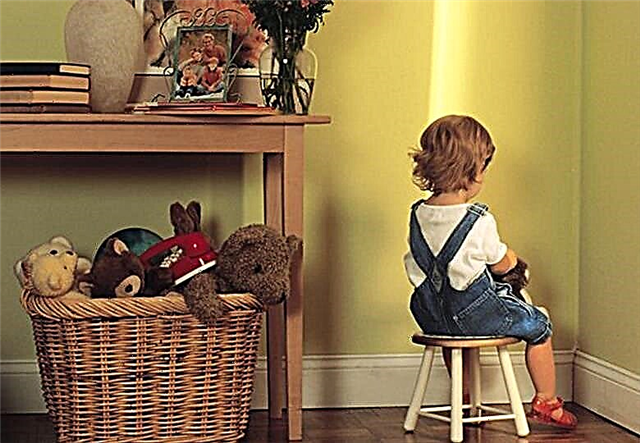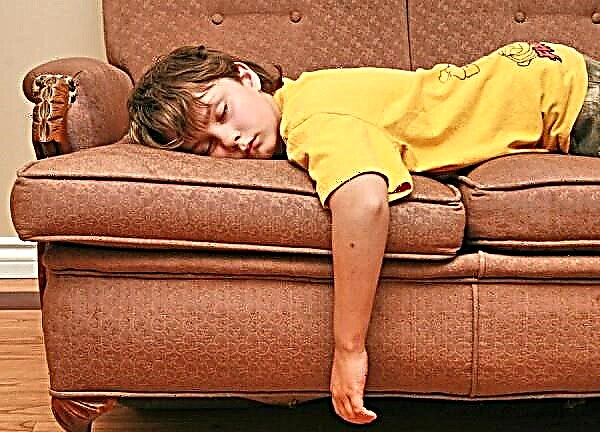Low blood pressure in a child can be observed for various reasons. Why it goes down, and how dangerous it is, the doctor will say after examining the crumbs. An urgent visit to the doctor is required if the child is vomiting, he begins to faint.

Child
Normal pressure for babies
Newborn babies have low blood pressure. If its value is 60 by 40, then this is an indicator of the norm, albeit at the lower limit. Systolic blood pressure in infants up to two weeks of age usually does not exceed 96 mm Hg. Art., diastolic - 50.
When the heart contracts, blood is released into the arteries. In a newborn, the vessel walls are very elastic, they stretch and cannot provide significant resistance, which means that the systolic pressure does not rise to high levels. Diastolic - is determined at the moment of the greatest relaxation, the blood after the aortic valve is closed is displaced and spreads along the peripheral vessels. By the end of this stage, the pressure is at a minimum. It is also called the lower, while the systolic is called the upper.
As the baby grows, the pressure rises. By the month of life, it is in the range from 80 to 112 along the upper border and from 40 to 74 mm Hg. Art. - on the bottom. Until a year, significant changes no longer occur.
Note! For a baby at 12 months, a pressure of 90-112 to 50-74 mm Hg is considered normal. Sat.
Why does hypotension occur?
Pediatricians believe that it makes sense to control pressure for a child only after they reach three years of age. Before that, you need to monitor the indicator in premature babies, crumbs born with low weight, as well as in those who have congenital pathologies of the development of the heart and kidneys.
In addition to these factors, hypotension can begin for the following reasons:
- Wrong daily routine, in particular, when the baby is not getting enough rest.
- Constant stress. Emotional stress is harmful to a person at any age. The baby's nervous system is imperfect, so strong experiences affect his well-being.
- Complications after previous infections. If a child is often sick, then this may affect the work of his cardiovascular and nervous systems. In addition, certain diseases and pathologies can lead to a decrease in pressure. These are, for example, pneumonia, tuberculosis, hydrocephalus.
- Heredity. The risk of lowering blood pressure increases when the mother suffers from a similar problem, especially if the woman has a difficult pregnancy and childbirth.

Low blood pressure during pregnancy
Note. Children should not be given medicine without a doctor's prescription. There are drugs that lower blood pressure, which is a side effect. To avoid negative consequences, you cannot self-medicate.
Hypotension symptoms
Low blood pressure is rarely observed in babies who do not have pathologies in the work of the heart, blood vessels and nervous system. Usually, in children under one year old, it is enough to control the pulse. In newborns, it can reach 170 beats per minute, this is a variant of the norm. In infants from a month to a year, on average, it is 140.
Hypotension in infants can be recognized by the following symptoms:
- The child becomes apathetic, lethargic. He is very calm, shows almost no emotion.
- The skin is pale.
- Cold limbs.
- Weak muscles. Such a manifestation can affect the health and well-being of the baby in the future. If the muscles are overly relaxed, the stress on the joints increases. The baby cannot hold his head, he quickly gets tired even during breastfeeding. It is difficult for him to cope with his own weight, any activity turns out to be tiring for him.
Older children become moody, irritable, and may have headaches. The child often has an increased heart rate, nausea and even vomiting, not associated with food intake, the body becomes covered with cold sweat.
Note! One of the common signs of hypotension is dizziness. The baby can become so bad that he will lose consciousness.
How to increase blood pressure
If the child does not have serious congenital abnormalities, then usually, in order to normalize the pressure, it is necessary to reconsider the conditions in which he is. This applies to daily routine, nutrition, and daily activities.
Daily regime
From infancy, they try to accustom children to the regime. When the baby lies down, gets up, eats at approximately the same time, he feels better. The crumbs quickly get used to repetitive actions and feel much calmer, which affects not only their behavior, but also their health.
There are sleep norms for children under one year old and at an older age. This does not mean that you need to force the child to rest for a certain number of hours. When planning a daily routine, you can focus on them. Be sure to be with your baby in the fresh air every day for at least two hours.

A must-have daily walk
Physical activity
Physical activity usually increases blood pressure. The same rule applies to children. If the child spends most of the day lying in the crib, then this will certainly affect his well-being. It is useful to do not only massage to the baby, but also not to forget about gymnastic exercises. As soon as the baby begins to confidently roll over on his stomach, you need to stimulate him to crawl, then not interfere when he wants to get up and tries to take the first steps. In case of hypotension, it is important to increase muscle tone and improve blood circulation.
Diet
With low blood pressure, it is useful to include the following in the diet:
- dairy products;
- hard cheese;
- eggs;
- legumes;
- fresh berries and fruits;
- products containing starch, for example, potatoes, rice, buckwheat, corn.
Note! An older baby, already familiar with honey, can add it to tea or cereals instead of sugar. It is not recommended to introduce it into the diet until a year.
Actions for fainting
What to do if your child has low blood pressure and faints:
- Lay him on a sofa or bed;
- You don't need to put anything under your head, it's better to raise your legs;
- Sprinkle cool water on your face, you can moisten your forehead or temples;
- Smell a cotton swab dipped in ammonia. Usually it is always in the home medicine cabinet;
- Call a doctor or ambulance.
After a fall, it is important to make sure that the child has enough air. If he has tight clothes, then you need to unfasten the buttons or loosen the ties, also open the window or move him to a room where it is cooler.
Diagnostics
If the child's blood pressure has dropped, only the doctor will tell you what to do. If symptoms of hypotension are found, it is necessary to go with the child to the clinic. If the baby is not observed by narrow specialists, then a pediatrician examines him first. To clarify the diagnosis, he can refer to a neurologist, cardiologist and endocrinologist.
The doctor must measure the pressure of the crumbs. Moreover, one value is not enough, you need to observe the indicator in dynamics. It happens that the pressure drops for a short period of time, and then normalizes on its own. There is nothing dangerous in this. However, if it remains low for an extended period, a survey is required. Therefore, the doctor must record the pressure at least three times, maintaining some time between measurements. He will also advise parents to continue observing. To do this, you will have to use a tonometer in the morning and evening hours, recording the values obtained.
To exclude diseases of the heart and blood vessels, the baby will need an ECG, ultrasound of the heart. These procedures are performed at newborn screening, which is performed at one month of age. If the results show deviations, then the child needs a doctor's consultation, possibly treatment.
Note! Up to a year it is easier to get rid of many diseases, to avoid complications and sad consequences. Therefore, one should not ignore the mandatory examinations, as well as regular visits to the local pediatrician.
A neurologist usually directs children for an ultrasound of the brain, he may also advise to go to an ophthalmologist to examine the vessels of the fundus.

Child at the ophthalmologist
Prevention
To avoid a drop in pressure, you need to adhere to the recommendations:
- Observe the correct daily routine;
- Provide the child with a balanced diet;
- Strengthen the immunity of the baby;
- Be in the fresh air every day;
- Make sure that the baby's days are varied, do exercises with him, introducing him to simple exercises;
- Turn to hardening.
Not everyone knows why to control low pressure, because it is dangerous when, on the contrary, it rises. In fact, any changes that are lingering in nature affect health. So, low blood pressure can cause circulatory disorders in the brain, so you should not leave it unattended.



